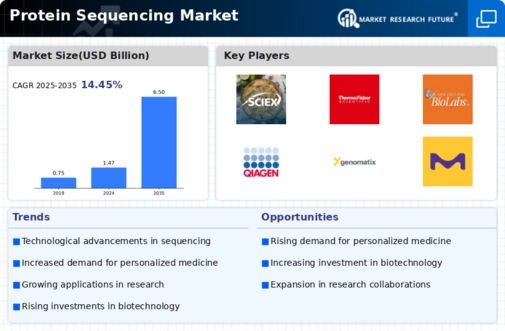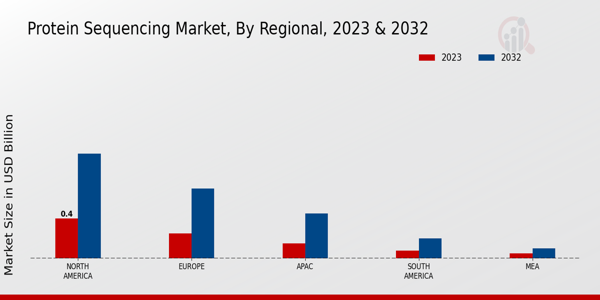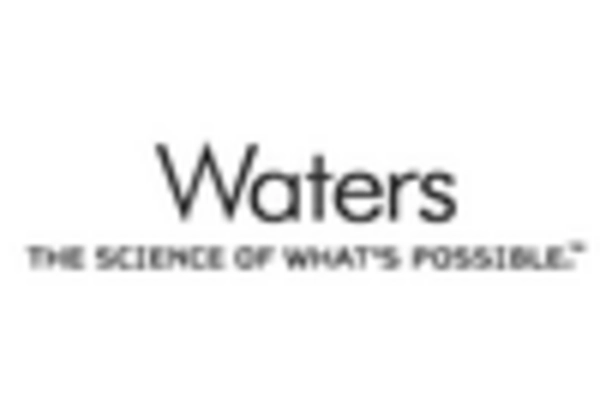Emerging Research Collaborations
The Protein Sequencing Market is witnessing a rise in collaborative research initiatives among academic institutions, government agencies, and private companies. These partnerships are fostering innovation and accelerating the development of new sequencing technologies and applications. Collaborative efforts often lead to shared resources and expertise, which can enhance the overall quality of research in protein sequencing. As more entities recognize the value of collaboration, the Protein Sequencing Market is expected to benefit from increased funding and resource allocation. This trend may result in breakthroughs that could redefine the landscape of protein analysis, further solidifying the industry's position in the scientific community.
Increased Investment in Biotechnology
The Protein Sequencing Market is benefiting from increased investment in biotechnology, which is driving innovation and research. Governments and private entities are allocating substantial funds to support biotechnological advancements, particularly in protein analysis. This influx of capital is facilitating the development of novel sequencing technologies and methodologies, thereby enhancing the capabilities of researchers and clinicians. The biotechnology sector is projected to grow significantly, with estimates indicating a market size exceeding hundreds of billions of dollars by the end of the decade. This growth is likely to have a cascading effect on the Protein Sequencing Market, as advancements in biotechnology often lead to improved protein sequencing techniques and applications.
Growing Applications in Drug Discovery
The Protein Sequencing Market is increasingly recognized for its vital role in drug discovery processes. As pharmaceutical companies strive to develop new therapeutics, the ability to accurately sequence proteins is essential for understanding drug interactions and mechanisms of action. The market is projected to see substantial growth, driven by the rising number of drug candidates entering clinical trials. Reports suggest that The Protein Sequencing could reach a valuation of over 200 billion dollars in the near future, highlighting the importance of protein sequencing in this domain. Consequently, the Protein Sequencing Market is likely to expand as it becomes integral to the drug development pipeline.
Rising Demand for Personalized Medicine
The Protein Sequencing Market is witnessing a surge in demand for personalized medicine, which tailors medical treatment to individual characteristics. This trend is largely fueled by advancements in genomics and proteomics, which allow for a deeper understanding of disease mechanisms at the molecular level. As healthcare shifts towards more individualized approaches, the need for precise protein sequencing becomes paramount. The market is expected to expand as pharmaceutical companies increasingly rely on protein sequencing to develop targeted therapies. Reports indicate that the personalized medicine market could reach a valuation of several billion dollars in the next few years, further emphasizing the critical role of the Protein Sequencing Market in shaping future healthcare solutions.
Technological Advancements in Protein Sequencing
The Protein Sequencing Market is experiencing rapid technological advancements that enhance sequencing accuracy and efficiency. Innovations such as next-generation sequencing (NGS) and mass spectrometry are revolutionizing the field. These technologies allow for high-throughput sequencing, enabling researchers to analyze vast amounts of protein data in a fraction of the time previously required. The market is projected to grow significantly, with estimates suggesting a compound annual growth rate (CAGR) of over 10% in the coming years. This growth is driven by the increasing need for precise protein analysis in various applications, including drug development and biomarker discovery. As these technologies continue to evolve, they are likely to further propel the Protein Sequencing Market, making it a focal point for research and development efforts.


















Leave a Comment